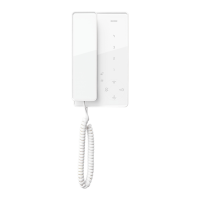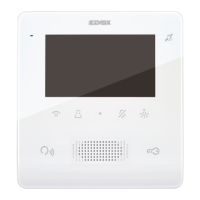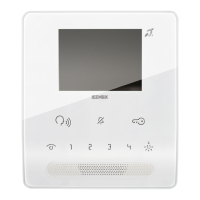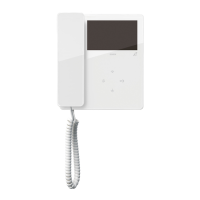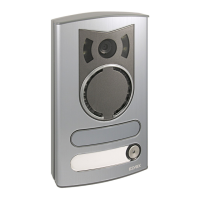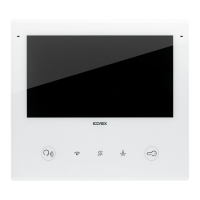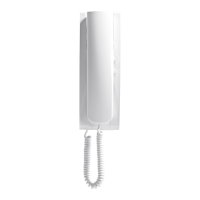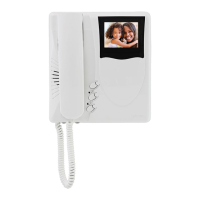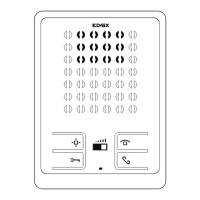9
7509 - 7509/D Tab
EN
Alert
Together with reception switchboard 40510, the indoor station creates a system that can send a signal to the switchboard
operator even when the Due Fili bus is busy. In contrast to other indoor stations, it is possible to use only the pair of
terminals FP-M as an input, not the keys. In this case the local landing call function is lost. The FP-M operating mode
is selected using SaveProg.
1. Activate input FP-M. See below for the description of the two activation possibilities.
2. The indoor station waits to receive the alert from the switchboard. In the meantime, the chosen signalling is sent to
the user according to the table below. On receipt of the message, the switchboard emits a double beep and displays
a red envelope icon to alert the operator.
3. If it does not receive a reply, the indoor station resends the message every 10 s. After 5 attempts with no reply the
indoor station stops sending the messages.
4. When an indoor station receives conrmation of the receipt of the message by the switchboard, the chosen signalling
is sent to the user according to the table below. Normally the time between the sending of the request and conrmation
of reception is less than a second.
5. Until the switchboard calls the indoor station to service the request, the indoor station resends the message every 120
s. At each message, the switchboard emits two meets and increases count of messages received. The counter can
be viewed by opening the list of alerts in the switchboard. The sending of messages never terminates. It continues
until the end of the service described in the next point, unless the switchboard is powered o or removed from the
system, in which case the indoor station, after 5 unsuccessful attempts starting from the rst timeout of 120 s, will
return to standby mode and the Alert signal is no longer sent to the user.
6. If the switchboard operator calls the indoor station from the list of warnings, and only from this, a message is sent to
the indoor station via the Due Fili bus to end the Alert procedure so the related signal is no longer sent to the user.
Note: if the indoor station is switched o, when it is switched back on again the function starts again from the beginning.
Alert Conguration
Use SaveProg to select some of the characteristics of the Alert function:
1. Enabling
a. Disabled (default)
b. Enabled
2. Polarity state active
a. Contact normally open (default)
b. Contact normally closed
3. Activation delay
a. 0.1 s (default)
b. 0.5 s
c. 1 s
d. 2 s
4. Signalling mode
a. None
b. LED
(default)
c. Sound
d. Call repeater output
According to the selected signalling type, apart from the rst, the timer is as follows:
STATUS LED timer Sound timer Call repeater timer
The indoor station waits to receive the
alert from the switchboard
Flashing with a cycle of 0.5 s
on / 0.5 s o
A 2 KHz tone for 0.2 s
Activation for 1.6 s every
3.2 s
The indoor station has received con
-
rmation of the receipt of the message
from the switchboard
Flashing with a cycle of 0.1 s
on / 0.1 s o
A 1 KHz tone for 0.1 s
Activation for 0.4 s every
0.8 s
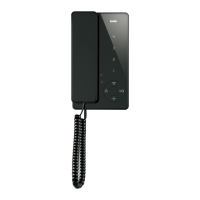
